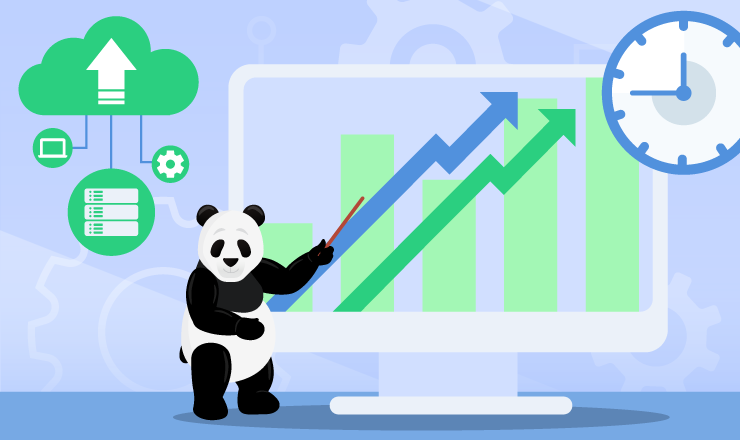How to Make the Switch from Excel to Asset Panda

Spreadsheets: whether you love them or hate them, your organization likely uses them every day to keep tabs on budgets, metrics, and more. However, asset tracking in Excel leaves a lot of room for error – in fact, 88% of spreadsheets are estimated to contain errors. When you're making business decisions based on spreadsheet data that may or may not be accurate, you run a greater risk of operational errors.
Just think – if you're using an Excel asset management template to keep track of your company's physical assets (e.g., IT assets, furniture, etc.), what would you do if you discovered a discrepancy? How would you go about holding the right people accountable without a clear change history? How will you ensure the data stays accurate in the future without the ability to track changes and prevent manual errors?
In order to accurately track your company's assets and protect your investments, Excel isn't the answer. To truly automate your asset management workflows, collaborate with your entire team, and access real-time data, you need a comprehensive asset management platform like Asset Panda.
While we know it can seem overwhelming to make the switch from spreadsheet to software, Asset Panda makes it easy to do so. Let's review the benefits of switching from Excel to an asset management solution, as well as tips for a smooth transition.
The Benefits of Switching to an Asset Management Platform
Migrating from a spreadsheet to an asset management software solution isn't necessarily a quick fix. However, taking the time to streamline your workflows will spare your team many headaches in the future. Here are a few specific benefits you'll see when you make the switch:
- Accurate record history: When you track your assets in a platform purpose-built for asset management, you'll be able to keep an accurate record history for each individual item. From purchase to disposal, you can track who an item was checked out to, where it was located, and when it was repaired throughout its lifecycle. Best of all, you don't need to worry about sorting through various spreadsheet versions to access this data.
- Ability to collaborate: Since an asset management platform provides a single source of truth for your data, this allows your team to easily collaborate in one place. Now, you don't need to worry about everyone working on their own version of a spreadsheet and siloing data – you can all work together in real-time to see the state of your assets. Plus, a solution with unlimited users and custom user permissions truly allows your entire team to get on the same page and scale with confidence.
- Real-time data reports: With your data being updated in real-time, you can accurately report on the status of your asset estate at any given time. You can trust that your centralized data is up to date and, of course, regularly audit your asset inventory to confirm your data accuracy. As discrepancies do come up, though, you can easily look back at reports and asset records to see who made what change and hold the right people accountable.
How to Seamlessly Migrate Your Spreadsheet Data into Asset Panda
While the benefits of ditching spreadsheets are clear, you're probably still wondering, "How exactly do I make the switch?"
Luckily, solutions like Asset Panda make it easy to migrate your asset records directly from your existing Excel sheet. Of course, there are a few steps you'll need to take to ensure the data is mapped over correctly, but it really is as simple as:
- Selecting your desired Group in Asset Panda and clicking 'Import'
- Downloading our Sample CSV to see how you can update your column headers so your data will map over correctly
- Uploading your updated CSV file and clicking 'Submit'
Scrubbing your data and updating your CSV file may take some time, but bulk importing your assets like this will save you lots of time and manual work overall. Plus, Asset Panda's customer support team is available via email 24/7 to help ensure your import goes smoothly.
Conclusion
As with implementing any new software solution, migrating your asset records from Excel to Asset Panda can seem like quite a feat. However, with easy import options, unlimited user permissions, and robust reporting, you'll save time and resources once you make the switch.
If you're an existing Asset Panda customer and have any questions, feel free to contact [email protected] 24/7 (we guarantee a response within 24 hours!).
Not yet a customer, but ready to see Asset Panda in action? Request your demo today.
Related News & Press

Learn more from an Asset Panda expert
Get a FREE consultation with an asset tracking expert to find out how you can transform your asset tracking.
Contact our Sales Team at (888) 928-6112


